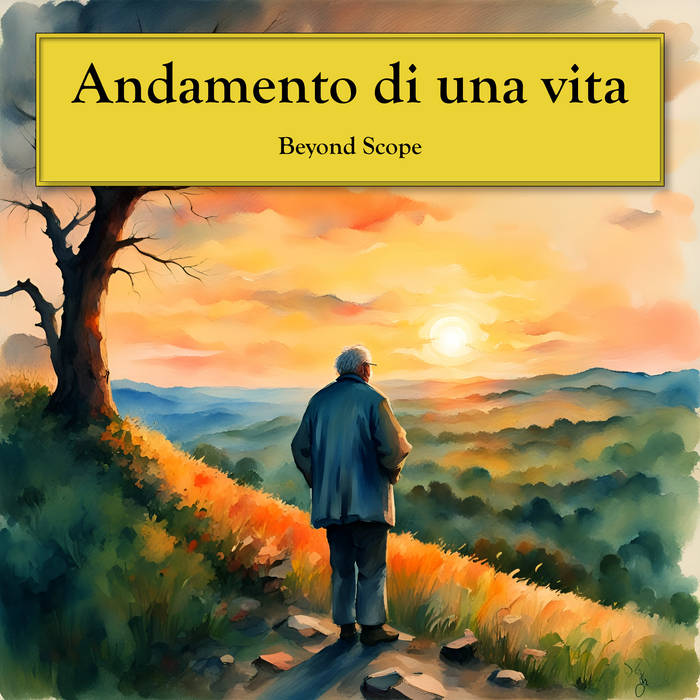
Posted
Hi Community!
Just released a track which I completely created with Synfire. Means every note you hear was defined in Synfire as it is (Except the woosh at the end, that single thing I added later in the DAW). It also uses a lot the articulation feature to express instruments in different ways. I also loaded the "real" VSTs directly into Synfire. It holds really a lot of instruments to provide a full symphonic orchestra. Some of them I duplicated in the DAW and layered with versions from different VST libraries to provide a more versatile sound - but no notes added or changed in the DAW.
Enjoy it and subscribe here in Spotify if you want:
https://open.spotify.com/album/7F57PIJ2J8bxArdVcmLEG1?si=D12LuhJwTjKKJYdA-lU-tg
https://beyondscope.bandcamp.com/track/andamento-di-una-vita

@Andre if you like it, feel free to use it to promote Synfire.
PS: If you also use Audio-Imperia instruments, you might want to know, that I published a lot articulations to the Synfire "cloud" repository, which you can load:

Sat, 2023-12-23 - 00:28 Permalink
Well, it does evoke a few associations and I'm not quite sure if that's intended. Don't get me wrong, allusions and evoking associations can be interesting, I like to do that too, but here it seems a bit unmotivated and randomly thrown in.
associations.mp3
Sat, 2023-12-23 - 01:06 Permalink
Hi Juergen! Interesting feedback.
The first fragment I don't know - I think I never heard it before. For sure that is pure coincidence.
Regarding "Moldau". Indeed one of my favorite pieces of music and I see kind of similarities. I would lie that Moldau did not inspire my somehow. But as you can hear, it is a different melody although it may trigger the same emotions. There are not endless scales and notes. Combined with rules of music, it leads always to similarities somewhere in a score.
Hope you can enjoy it anyway
Sat, 2023-12-23 - 15:03 Permalink
Don't get me wrong, there is no need to justify this workflow in general. Composers of every era and every level have used inspiration from others. And Smetana's Moldau is not an original melody either, actually it's the slightly modified melody from a simple children's song.
The point is more about how things are made. In the field of classical music, things should develop organically, especially if we're talking about the 19th century style that you presumably want to reproduce. But your "Moldau" theme appears suddenly out of nowhere, is being played once and then the next things comes along. Apart from these points of criticism, yes, I can listen to it with some joy.
As for the flute intro: Well, as I said, it was just an association and I was curious if that was intentional. In this case, it would have been a well-done transformation and would have indeed impressed me. It is Bach's partita in A minor. But if you don't know it, maybe it did get to you in some subconscious way? The motif has gained some attention in pop music, 1.8 billion views on YouTube. That might even have pleased Bach.
Thu, 2023-12-28 - 11:11 Permalink
I like the contrasts. It's nice that there is change. With Synfire, the temptation is always strong to let a working part run on endlessly with changing harmonies because it's so convenient. But one can see that you have deliberately used different colors and patterns.
The rhythm is sometimes a little blurred. Tip: You can bring forward the latency for sounds that start slowly so that they fall better into the rhythm.
Short 30 second build-ups or purely atmospheric textures are comparatively easy (typical demo tracks). Anything with a narrative longer than a minute is always a challenge. Then you need an overarching theme that is introduced and developed further.
Building a narrative is, technically speaking, pretty easy with Synfire. However, it is not so easy to consistently follow a stylistic idiom. As juergen already mentioned, some elements appear unexpectedly out of nowhere and are then not developed further (also happens to me all the time).
I think it's essentially about deciding whether a melody (however short it may be) is suitable as a theme (foreground), in which case it has to be developed. Or whether it is just background, reinforcement or decoration, in which case it has to adapt to the foreground.
It's the same with rhythms and harmony. Is a progression suitable as a theme? Or is it just a transition, interlude, etc? The coolest thing with Synfire is that you can use harmony as a theme very easily.
I'm curious to follow your progress.



